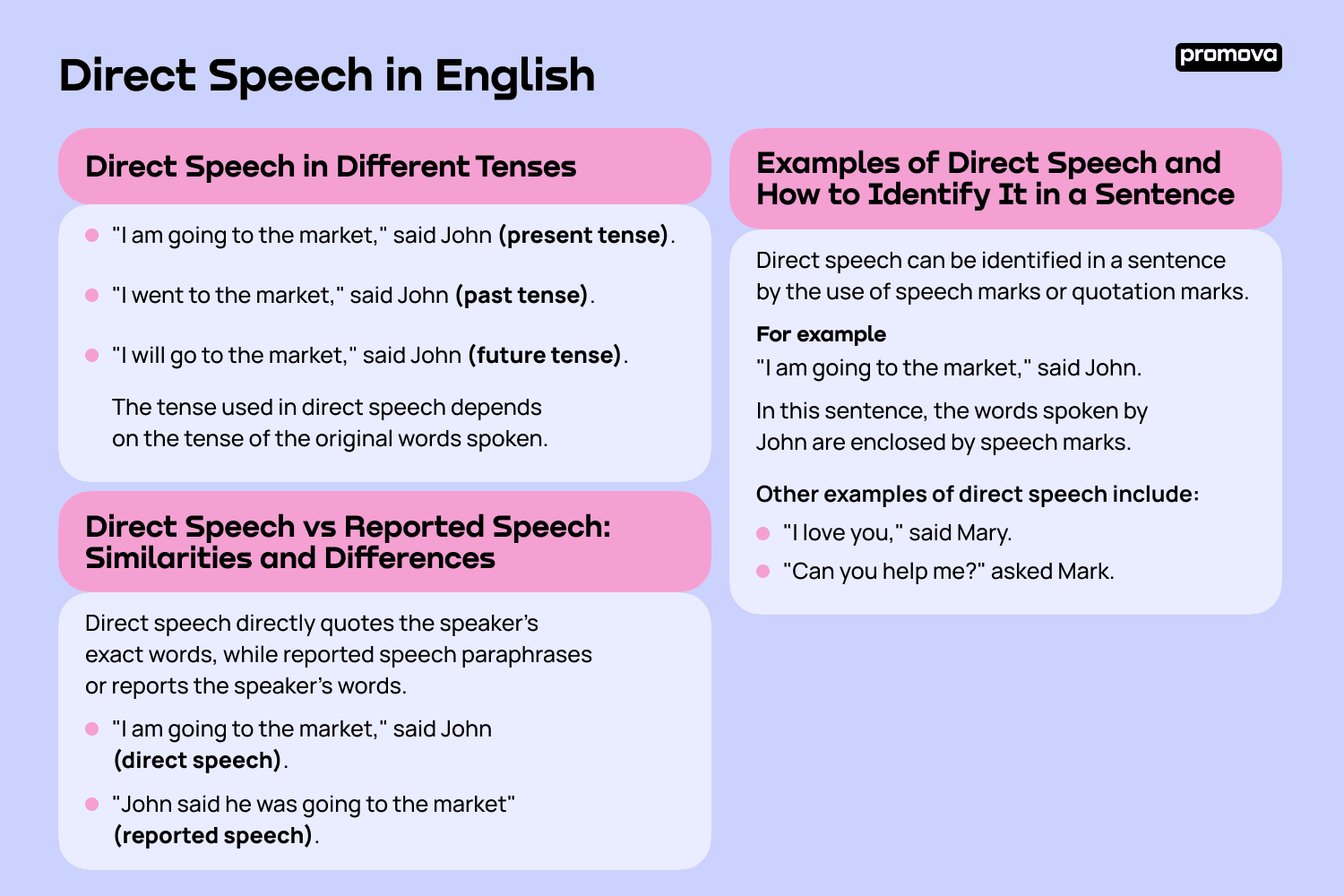Direct Speech in English
Contents
Direct speech is a crucial aspect of the English language that every speaker of the language must understand. In this reference, we will explore everything you need to know about direct speech, including its definition, examples, punctuation rules, and common mistakes.
What is Direct Speech?
Direct speech is a type of speech that involves the exact words spoken by a person or character. It is also known as quoted speech or speech marks. Direct speech is used to convey a message or conversation directly from the speaker to the listener.
For example, "I am going to the market," said John. In this sentence, the exact words spoken by John are quoted, and the sentence is enclosed by speech marks.

How is Direct Speech Different from Indirect Speech?
Direct speech is different from indirect speech in that it directly quotes the exact words of the speaker.
Indirect speech involves paraphrasing or reporting the speaker's words. For example, "John said that he was going to the market." In this sentence, the speaker's words are not quoted directly, but rather reported indirectly.
Examples of Direct Speech and How to Identify It in a Sentence
Direct speech can be identified in a sentence by the use of speech marks or quotation marks.
For example, "I am going to the market," said John. In this sentence, the words spoken by John are enclosed by speech marks.
Other examples of direct speech include "I love you," said Mary, and "Can you help me?" asked Mark.
Direct Speech Punctuation Rules
Direct speech follows specific punctuation rules that must be observed to convey the correct meaning of the sentence.
The first word of the direct speech sentence is capitalized, and the sentence is enclosed by speech marks. If the direct speech sentence ends with a full stop, exclamation mark, or question mark, the punctuation mark is placed inside the speech marks.
For example, "What is your name?" asked Tom. If the direct speech is followed by a reporting clause, the reporting clause is separated from the direct speech by a comma. For example, "I am going to the market," said John.
Direct Speech in Different Tenses
Direct speech can be used in different tenses to convey different meanings.
- "I am going to the market," said John (present tense).
- "I went to the market," said John (past tense).
- "I will go to the market," said John (future tense).
The tense used in direct speech depends on the tense of the original words spoken.
Direct Speech vs Reported Speech: Similarities and Differences
Direct speech and reported speech are similar in that they both convey a message or conversation. However, the main difference between them is that direct speech directly quotes the speaker's exact words, while reported speech paraphrases or reports the speaker's words.
- "I am going to the market," said John (direct speech).
- "John said he was going to the market" (reported speech).
7
Common Mistakes
Let's take a look at what to avoid:
- Forgetting to enclose the words spoken by the speaker in speech marks. This mistake can make it difficult to identify direct speech in a sentence.
- Forgetting to capitalize the first word of the direct speech sentence. Both of these mistakes can be avoided by following the correct punctuation rules for direct speech.
- Remember to change the tense of the original words spoken, if necessary. For example, "I am going to the market," said John (direct speech). "John said he was going to the market" (reported speech). In this example, the verb tense has been changed from present tense to past tense when reporting John's words.
Summary
Direct speech helps us to directly quote the words spoken by a speaker. Use the correct punctuation rules for direct speech, and make sure that the first word of the direct speech sentence is capitalized. Soon, you'll effortlessly use it in your own English speech without even thinking.
Check out more references below if you want to learn more!
Comments